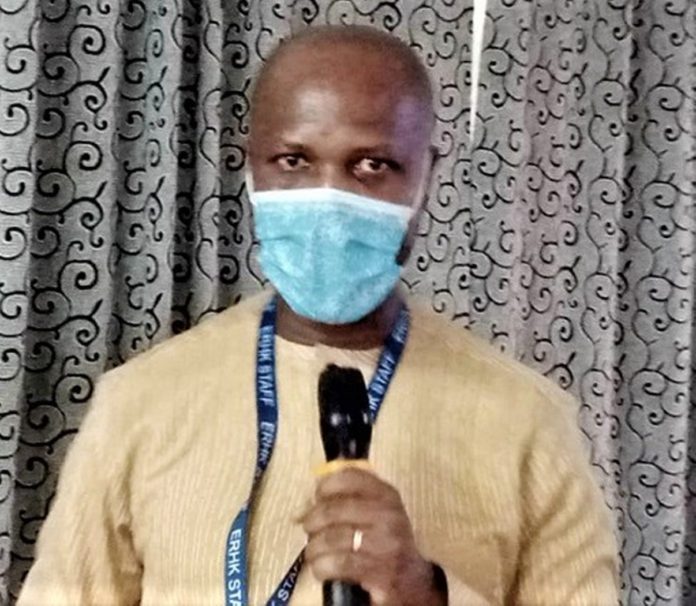A total of 75 in-patients who were treated and discharged from the Eastern Regional Hospital, Koforidua, last year, absconded without paying medical bills.
Within the same period, the hospital had to foot the bills of some poor persons treated at the facility because their relatives and family members could not pay their medical bills.
While the hospital lost GH¢103,476 from the absconders, the bill for the poor persons amounted to GH¢3,183.
These incidents were made known at the 2022 annual performance review meeting of the hospital last Monday.
The meeting, which was attended by the senior staff of the hospital and the media, was aimed at discussing the hospital’s progress and challenges, to address inherent challenges to make the facility friendlier to patients.
Addressing the gathering on the hospital’s premises, the Medical Director, Dr Arko Akoto–Ampaw, said the action taken by the absconders, together with the cost of treatment of the poor persons, made the facility lose GH¢106,659.
He also indicated that the hospital lost GH¢64,929 and GH¢18,657 on absconders and poor persons in 2021 and 2022 respectively.
Dr Akoto-Ampaw said such a situation had arisen because the hospital was primarily government-owned. He said given that, no patient could be denied healthcare services, irrespective of the patient’s financial situation, adding that many of them found it difficult to pay medical bills and absconded.
He indicated that although such patients were identified later, they were again treated despite not being able to settle their previous medical bills.
“No patient should be denied treatment or allowed to die because he or she cannot pay for services provided at the hospital. So, we will continue to treat them whenever they come to the hospital,” he said.
According to the medical director, malaria, hypertension, pneumonia, respiratory tract infection, tonsillitis, rheumatism/joint pains/musculoskeletal pain, conjunctivitis, urinary tract infection, anaemia and gastroenteritis, were the top 10 causes of attendance at the Out-Patients Department (OPD) of the hospital from 2020 to 2022.
ALSO READ:
Black Sherif pays medical bills of nursing mothers at Ridge [Photos]
aYo pays GHS20,000 medical bills for 13 new mothers at KATH
Causes of death
He mentioned that cardiovascular/stroke, pneumonia, prematurity, chronic liver cirrhosis, cardiac failure/CCF, HIV/AIDS/Retroviral infections, hypertension, septicaemia/sepsis, kidney disease and hepatic encephalopathy/encephalopathy were also the top 10 causes of deaths at the facility from 2020 to 2022.
According to Dr Akoto-Ampaw, the hospital’s OPD attendance had seen a significant decrease by 5.3 per cent from 283,114 in 2021 to 268,191 in 2022, while insured patients accounted for 86.5 per cent of attendance compared to 74.7 per cent in 2021.
The Medical Director said two-thirds of the total attendance; 65 per cent (181,728), was females while males made up 35 per cent, and an average daily OPD attendance of 931 patients was recorded at the facility.
Admissions, he further stressed, rose by 23.8 per cent (21,809) in 2021 to 26,990 in 2022, while the average length of stay at the facility rose from 5.5 per cent to 6.6 per cent in 2020.
Dr Akoto-Ampaw pointed out that through innovations, maternal deaths reduced from 59 in 2020 to 33 in 2021 and further increased to 46 in 2022, while institutional maternal deaths per 100,000 live births stood at 960 in 2020 and 640 in 2021, and further increased to 868 in 2022.
Achievements
Touching on the hospital’s achievements, he cited the rehabilitation of the hospital’s CT scan machine, the rehabilitation of the pre-operating theatre room, the painting of the main hospital laboratory, the construction of a diabetic block and the installation of a booster pump behind the physiotherapy block to ensure regular supply of water, among others.
Dr Akoto-Ampaw said his outfit would, this year, undertake projects such as the expansion of the hospital’s mortuary cold room and painting of its external walls, the creation of a new shed at the hospital’s main stores, painting of the hospital’s fence wall and construction of an autopsy unit at the hospital’s mortuary.

